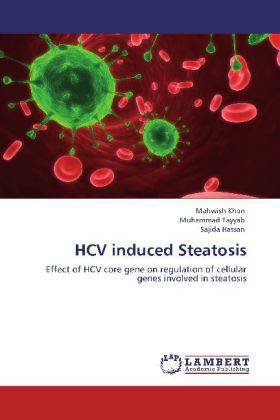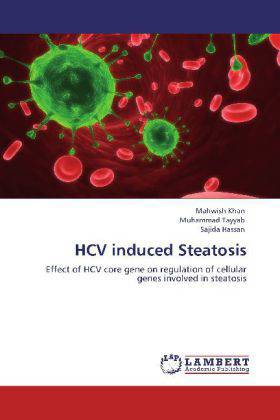
- Afhalen na 1 uur in een winkel met voorraad
- Gratis thuislevering in België vanaf € 30
- Ruim aanbod met 7 miljoen producten
- Afhalen na 1 uur in een winkel met voorraad
- Gratis thuislevering in België vanaf € 30
- Ruim aanbod met 7 miljoen producten
Zoeken
HCV induced Steatosis
Effect of HCV core gene on regulation of cellular genes involved in steatosis
Mahwish Khan, Muhammad Tayyab, Sajida Hassan
Paperback | Engels
€ 76,45
+ 152 punten
Omschrijving
Hepatitis C virus (HCV) has chronically infected a large number of patients, leading to the development of steatosis, cirrhosis and, ultimately, hepatocellular carcinoma. The pathogenesis of HCV has not been fully explained, although steatosis is considered to contribute greatly to liver fibrosis progression, modulating host-cell lipid metabolism. Suspected underlying molecular mechanisms include interactions between HCV proteins and intracellular lipid metabolic pathways. Recent studies have suggested that the nucleocapsid of HCV (core) acts as a pathogenic factor involved in lipid droplet accumulation, changes in lipogenic gene expression and/or the activity of lipogenic proteins in a genotype-specific manner. In this book, we have tried to summarize the current knowledge regarding HCV-induced steatosis and the regulation of expression of host genes and receptors that aid in the viral life cycle and promote liver diseases.
Specificaties
Betrokkenen
- Auteur(s):
- Uitgeverij:
Inhoud
- Aantal bladzijden:
- 132
- Taal:
- Engels
Eigenschappen
- Productcode (EAN):
- 9783846583333
- Verschijningsdatum:
- 16/03/2012
- Uitvoering:
- Paperback
- Afmetingen:
- 152 mm x 220 mm
- Gewicht:
- 204 g

Alleen bij Standaard Boekhandel
+ 152 punten op je klantenkaart van Standaard Boekhandel
Beoordelingen
We publiceren alleen reviews die voldoen aan de voorwaarden voor reviews. Bekijk onze voorwaarden voor reviews.








